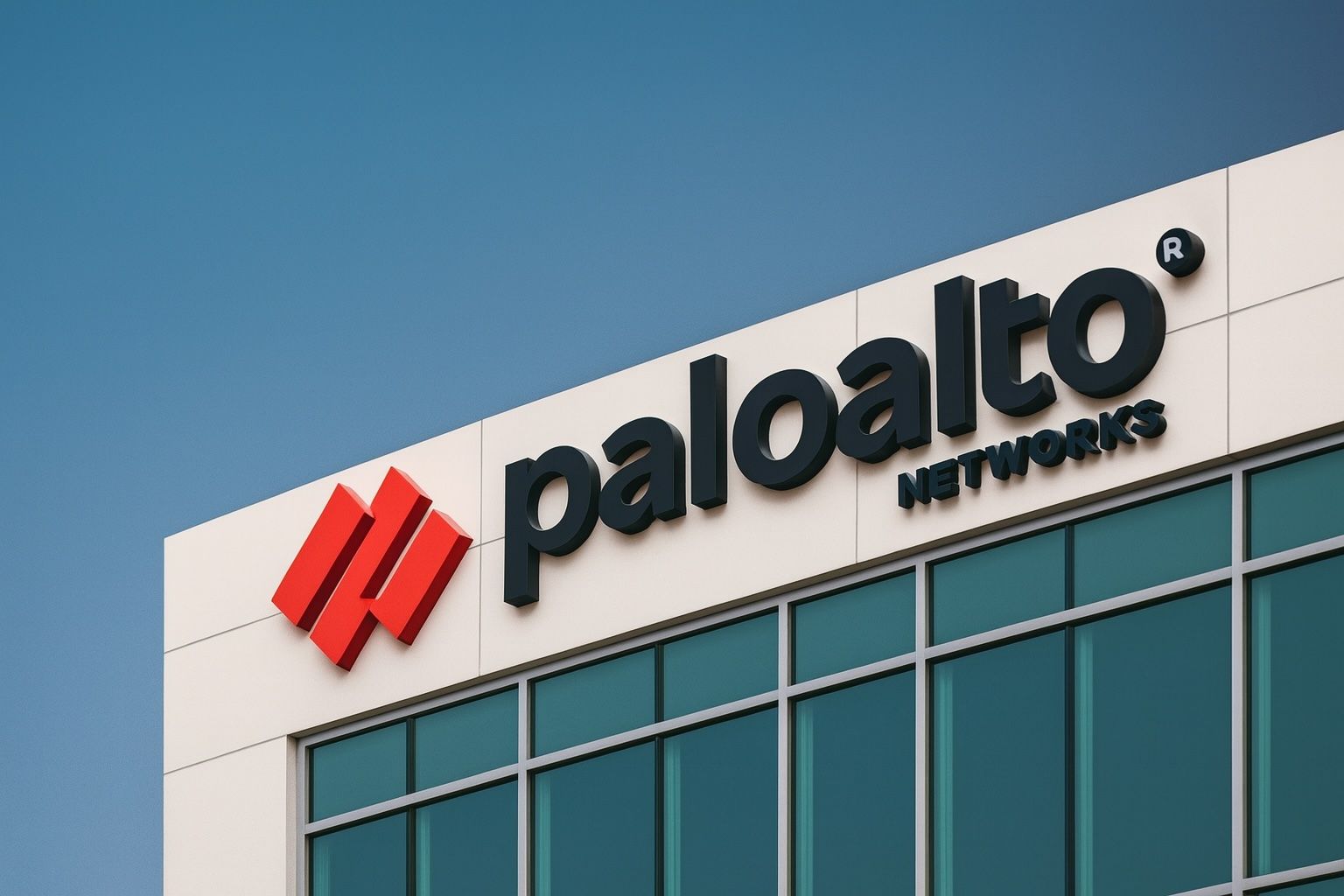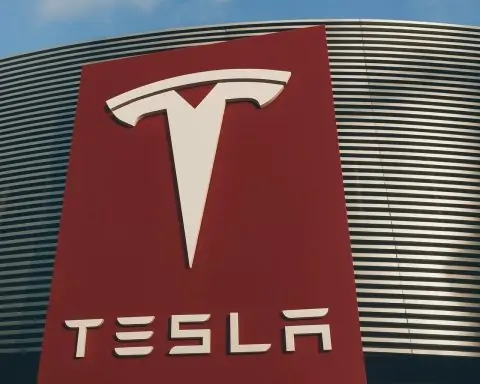- Stock Rallying on Strong Momentum: Palo Alto Networks (NASDAQ: PANW) traded around $216 per share on October 8, 2025, up roughly 3–4% over the past week as it nears multi-month highs [1]. The stock has returned ~37% annually over five years (nearly a 5× gain) and now commands a market cap around $135–140 billion [2].
- Fresh Headlines (Early Oct 2025): The company’s threat intelligence arm Unit 42 uncovered a major China-linked hacking campaign (“Phantom Taurus”) targeting foreign ministries’ emails [3]. No new earnings were released this week, but Palo Alto continues to make news with AI initiatives and strategic moves, keeping investors bullish on its growth story.
- Analysts Stay Bullish: Wall Street remains upbeat on PANW. Consensus rating: Strong Buy/Buy with ~$215–220 average price target (ranging ~$135 to $245) [4]. Multiple analysts hiked targets after the latest results; e.g. Wedbush sees $225 and Tigress Financial initiated at $245 [5] [6]. Overall, ~41 analysts cover PANW, and the vast majority recommend buying [7].
- Robust Financial Performance: Palo Alto’s fiscal Q4 2025 revenue jumped 16% to $2.5 billion, with strong growth in both product (+19%) and subscription (+15%) sales [8]. It achieved 95¢ adjusted EPS (up 16% YoY) [9] and ended FY2025 at a $10+ billion annual revenue run-rate [10]. Profitability is improving – non-GAAP operating margins are ~30% and free cash flow margins near 40% [11] – making Palo Alto one of the few cybersecurity leaders with solid profits [12].
- AI & Platform Strategy Drive Outlook: Management’s FY2026 guidance calls for ~14% revenue growth (to ~$10.5 billion) with EPS of $3.75–$3.85 [13] [14], above Street estimates. Palo Alto credits an AI-powered “platformization” strategy: customers are consolidating on its broad platform spanning network firewalls, cloud security, AI-driven operations, and now identity protection. Remaining performance obligations (backlog) surged 24% to $15.8 billion [15], and next-gen security ARR jumped 32% to $5.6 billion [16] – underscoring strong demand visibility.
- Current News & Developments (Oct 2025): Cybersecurity remains front-page news, benefiting Palo Alto’s narrative. In the first week of October, Unit 42 revealed a China-linked hacker group had breached government email systems [17], highlighting the need for Palo Alto’s advanced threat detection. Last month, the company even rolled out an AI-generated ad campaign showcasing its innovation culture [18]. No major product launches were announced in early October, but Palo Alto is gearing up for its Ignite conference (Oct 28) to spotlight new AI security offerings. Investors are also watching for any integration updates on recent acquisitions.
- Big Bets: $25 Billion Identity Security Acquisition: In a blockbuster July 2025 deal, Palo Alto announced plans to acquire CyberArk Software for ~$25 billion [19] – its largest takeover ever. This bold move adds CyberArk’s expertise in privileged access management (identity security), addressing a critical “zero trust” weak point for enterprises [20] [21]. CEO Nikesh Arora said the rise of AI and machine identities means “every identity requires the right level of privilege controls” [22]. The deal (a mix of cash and stock) represented a ~29% premium for CyberArk and is expected to close in FY2026 [23]. Palo Alto’s stock initially fell ~8% on the news amid investor concern about digesting such a big purchase [24], but analysts see strategic merit: it instantly makes PANW a one-stop cybersecurity platform spanning endpoints, cloud, AI, and identity protection [25] [26]. The acquisition should broaden Palo Alto’s enterprise appeal and could even boost growth and gross margins once integrated [27], though execution will be key.
- Competitive Position: Palo Alto Networks is widely considered the world’s largest pure-play cybersecurity company by revenue and market cap [28]. It consistently ranks at the top of industry lists and competes with the likes of Fortinet, CrowdStrike, Zscaler, and Cisco. Unlike some peers, Palo Alto offers a diversified product suite (from next-gen firewalls to cloud security and SOC automation) and is solidly profitable, which “many newer companies are struggling with” [29]. Its aggressive R&D and acquisition strategy (14 buys since 2019, including several cloud/AI startups [30]) has expanded its capabilities. This has helped drive a consolidation trend as customers prefer integrated platforms over managing dozens of point solutions [31]. By leveraging scale and a broad portfolio, Palo Alto aims to fortify its moat – especially as AI reshapes the threat landscape. Notably, Fortinet’s stumble in late summer over a slow product refresh underscored how Palo Alto’s software-centric, AI-enhanced approach may be winning favor [32] [33]. Still, competition remains fierce, and the industry’s fragmentation means Palo Alto must continually innovate (or acquire) to stay ahead [34].
- Expert Commentary: Financial experts largely praise Palo Alto’s execution and prospects, often citing its pivot to a platform model and AI focus. “Demand for cybersecurity remains strong… customers look to us to secure their cloud and AI transformations,” CEO Arora noted in August [35]. Morningstar’s analyst highlighted that “the company benefits from both net new AI spending as well as a reallocation from services to products (via automation)”, given its AI-driven offerings [36] [37]. Bulls argue that Palo Alto’s expansion into identity security (via CyberArk) and its surging recurring revenues create “multiple catalysts for sustained growth”, potentially warranting a higher valuation [38]. On the flip side, some caution that AI hype inflated the CyberArk price tag and warn of integration risks – “the risk [is] that the buyer is overextending to keep pace with the latest tech mania,” as Reuters Breakingviews put it [39]. Additionally, at ~50× forward earnings, Palo Alto’s stock isn’t cheap, so any growth hiccups could spur volatility.
- Forecasts & Long-Term Outlook: Looking ahead, analysts forecast double-digit annual growth for Palo Alto as cybersecurity demand climbs. For the medium term, Wall Street’s one-year price targets cluster in the low-$200s, implying modest upside from current levels [40] – essentially reflecting the stock’s strong run year-to-date. However, high-conviction bulls see more room to run: several have targets in the $230–$250+ range within 12–18 months [41] [42]. Much depends on successful integration of acquisitions and continued margin expansion. Longer term, Palo Alto itself has set ambitious goals, with an ARR (annual recurring revenue) target of ~$15 billion by 2030 – roughly triple today’s level, a sign of management’s growth optimism (and a CAGR of ~15% through the decade). Industry tailwinds support this optimism: global cybersecurity spending is projected to rise ~12% in 2025 [43] and remain elevated as AI-era threats proliferate. Independent forecasts even envision PANW’s stock potentially doubling or more by 2030 in bullish scenarios, though such distant projections carry uncertainty. In sum, Palo Alto Networks enters late 2025 with strong momentum – an expanding product arsenal, bullish analyst sentiment, and a leadership position in a critical, growing industry. If it can execute on integrating big acquisitions and continue capitalizing on the AI-driven security wave, the company appears well positioned to deliver further growth and shareholder value in the medium and long term.
Sources: Palo Alto Networks and CyberArk deal coverage – Reuters [44] [45]; Q4 2025 earnings and guidance – Reuters [46], Futurum [47] [48]; Analyst ratings and price targets – StockAnalysis [49] [50]; Competitive landscape – Bullish Bears [51] [52]; Unit 42 threat intel news – ts2.tech [53]; Expert quotes – Reuters [54], Breakingviews [55]; Stock performance data – Yahoo/Benzinga [56].
References
1. stockanalysis.com, 2. www.hotcandlestick.com, 3. ts2.tech, 4. stockanalysis.com, 5. stockanalysis.com, 6. stockanalysis.com, 7. stockanalysis.com, 8. futurumgroup.com, 9. futurumgroup.com, 10. futurumgroup.com, 11. futurumgroup.com, 12. bullishbears.com, 13. www.reuters.com, 14. futurumgroup.com, 15. futurumgroup.com, 16. futurumgroup.com, 17. ts2.tech, 18. www.hotcandlestick.com, 19. www.reuters.com, 20. www.reuters.com, 21. www.reuters.com, 22. www.reuters.com, 23. www.reuters.com, 24. www.reuters.com, 25. www.insidermonkey.com, 26. www.insidermonkey.com, 27. www.insidermonkey.com, 28. bullishbears.com, 29. bullishbears.com, 30. www.reuters.com, 31. www.insidermonkey.com, 32. bullishbears.com, 33. bullishbears.com, 34. www.reuters.com, 35. futurumgroup.com, 36. www.reuters.com, 37. www.reuters.com, 38. www.insidermonkey.com, 39. www.reuters.com, 40. stockanalysis.com, 41. stockanalysis.com, 42. stockanalysis.com, 43. www.reuters.com, 44. www.reuters.com, 45. www.reuters.com, 46. www.reuters.com, 47. futurumgroup.com, 48. futurumgroup.com, 49. stockanalysis.com, 50. stockanalysis.com, 51. bullishbears.com, 52. bullishbears.com, 53. ts2.tech, 54. www.reuters.com, 55. www.reuters.com, 56. www.hotcandlestick.com







